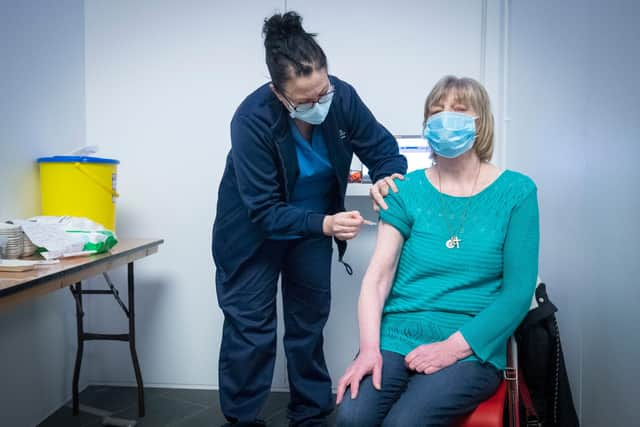Covid Scotland: Spring booster marks new era in vaccine programme
The moment has passed with very little fanfare. This is understandable given the more drastic events currently unfolding in Ukraine, but also nicely illustrates how vastly our relationship with the vaccine programme has changed in the few months since the Omicron booster drive.
Around this time a year ago there was even more pressure, as first doses moved from the over 60s to the over 55s, amid clamours from Scots over the age of 60 who had not yet been invited forward for a dose and were struggling to get answers from the helpline available at the time.
Advertisement
Hide AdAdvertisement
Hide AdTheir concerns were very real, and it is easy to forget how tense and fearful the atmosphere was, even at that point a year into the pandemic.


The delivery of first and second vaccine doses was a phenomenal achievement on a scale Scotland has never seen before.
It was not without its challenges - the early months were beset with supply shortages, and vague goals for delivery were aimed at and then moved, while more concrete targets were set without any way to measure whether or not they had been hit.
This left room for politicians to claim victory despite waves of complaints from the minority in various age and vulnerability groups who felt they had been left behind.
Now, thankfully, the picture is remarkably different, with neither the fear of a new variant nor the hope of finally exiting lockdown to inspire the frantic seeking of a dose.
The Joint Committee on Vaccination and Immunisation (JCVI) describes the Spring booster as a “precautionary” measure, and has already hinted at plans for another round in Autumn 2022.
It will remain to be seen what effect this has on vaccine uptake. There may be none, given the only groups currently invited are most at risk, either through age or immunity.
But these are the same invited each year for the flu vaccine, which has a lower uptake.
Advertisement
Hide AdAdvertisement
Hide AdUntil cases begin to rise again or a new variant arrives, this Spring booster will be our first taste of a “routine” vaccine programme – a key part of “living with” this virus.
A message from the Editor:
Thank you for reading this article. We're more reliant on your support than ever as the shift in consumer habits brought about by coronavirus impacts our advertisers.
If you haven't already, please consider supporting our trusted, fact-checked journalism by taking out a digital subscription.
Comments
Want to join the conversation? Please or to comment on this article.
